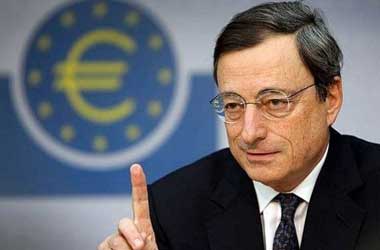
President of the European Central Bank Mario Draghi said Wednesday that the bank’s monetary policy position is still adaptable to the euro area’s weaker growth outlook and that its external demand weakness is doubtful to be painful.
While giving a speech at the ECB Watchers seminar in Frankfurt, Draghi said, “We are now seeing a more persistent deterioration of external demand. Draghi further added “But a “soft patch” does not necessarily foreshadow a serious slump.”
The Chief of the ECB also mentioned that there are indications that foreign demand can affect outlay through value chains manufactured within the eurozone. At present, however, capital investment anticipations are fairly solid as the basics for rebound in investment are in place, if global economic growth improves.
Draghi said “All in all, the current data suggest that external demand has not yet spilled over significantly into domestic demand, but the risks have risen in the last months and uncertainty remains high. This is why our medium-term outlook remains that growth will gradually return to potential, but the risks remain tilted to the downside.”
Referencing the labor market robustness of the eurozone and the resulting endurance in wage improvement, Draghi said the bank “confident that the sustained convergence of inflation to our aim has been delayed rather than derailed – meaning that we expect inflation to reach our objective at a later date than we previously foresaw.”
The ECB’s most recent stimulus package measure is a new initiative comprising of low cost long-term banks loans. The measure, called TLTRO-III, strives to maintain beneficial banking conditions and to establish the effective bank based remittance of the ECB policy.
In view of the softer inflation outlook, the Governing Council of the ECB has also agreed to extend its date – based consultation on interest rates “at least through the end of 2019. These decisions ensure that our policy stance remains accommodative in the face of a weaker growth outlook,” Draghi said.
The Bank will keep going to react to further inflation normalisation bottlenecks by modifying its forward rate outlook to accommodate the new inflation view, he added.
Furthermore, Draghi said
“The commitment to our objective also implies alertness to future risks and a readiness to respond to them should the medium-term outlook continue to deteriorate significantly. We are not short of instruments to deliver on our mandate.”




